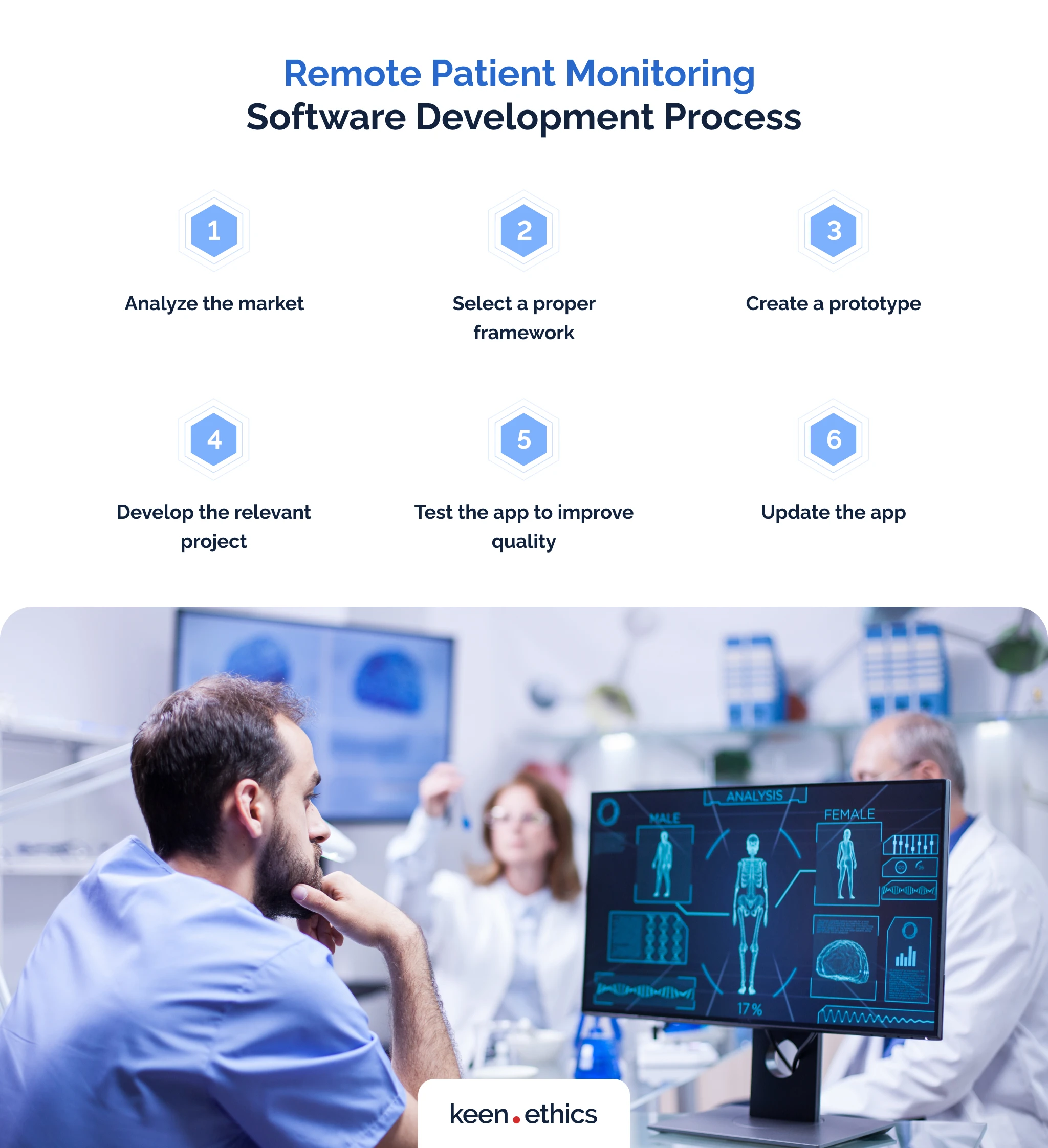Ingenious RPM Software: Reinventing Patient Surveillance in Medical Care
Ingenious RPM Software: Reinventing Patient Surveillance in Medical Care
Blog Article
The Future of Healthcare: Remote Client Checking Simplified
As health care proceeds to advance, one area that holds immense guarantee is remote person surveillance. The concept of simplifying this process with technological innovations is reshaping the way care is provided and gotten. With an emphasis on boosting person outcomes and improving health care distribution, remote surveillance is positioned to revolutionize the industry. By exploring the advantages, technological innovations, and future patterns in this field, we can acquire useful understandings right into the transformative capacity of remote individual surveillance.
Advantages of Remote Client Surveillance
Remote person surveillance presents a wide range of benefits for both doctor and clients alike. One significant advantage is the capacity to constantly keep track of patients' essential indications and wellness information from another location. This real-time tracking enables doctor to identify any type of worrying trends or changes quickly, bring about early interventions and potentially avoiding clinical emergencies. Additionally, remote client surveillance boosts the overall top quality of care by giving a much more holistic and thorough sight of clients' wellness status past traditional in-person check outs.
Moreover, remote person tracking can lead to improved individual outcomes and satisfaction. Remote surveillance can minimize the requirement for frequent health center brows through, reducing healthcare prices for both individuals and companies.
Modern Technology Driving Remote Tracking
In the world of contemporary healthcare, technological improvements play an essential role in driving the development and efficiency of remote person tracking. The assimilation of ingenious modern technologies such as wearable gadgets, mobile applications, and cloud-based systems has changed the way medical care providers remotely keep an eye on and handle patient health and wellness - software for remote patient monitoring. These innovations allow continuous real-time monitoring of crucial indicators, medication adherence, and other critical health data, permitting for prompt interventions and customized care plans
One trick technology driving remote monitoring is the Net of Points (IoT), which makes it possible for smooth connection in between clinical devices and healthcare systems. IoT gadgets such as smartwatches and cordless sensing units send and collect client data to centralized systems, promoting remote monitoring from anywhere in the world. Expert system (AI) and maker understanding formulas further enhance remote monitoring by evaluating large amounts of client data to find patterns, forecast wellness patterns, and alert health care service providers to prospective concerns.
Influence on Health Care Delivery
With the assimilation of advanced modern technologies driving remote person surveillance, the influence on health care shipment is becoming transformative and significantly extensive. Remote individual tracking allows healthcare providers to supply even more positive and individualized like individuals, resulting in improved health and wellness outcomes and lowered health center admissions. By from another location tracking important indicators, signs, and medication adherence, medical care experts can interfere early, stopping issues and improving the overall top quality of care.
In addition, remote tracking boosts access to medical care services, specifically for individuals in underserved or rural locations. Patients can get continuous surveillance and support from their homes, getting rid of the need for regular in-person gos to. This not just saves time and reduces prices for both patients and health care centers but likewise minimizes the danger of direct exposure to infectious illness, a crucial factor to consider in the existing additional hints medical care landscape.
Additionally, remote person tracking allows doctor to better assign sources and focus on treatment based upon real-time information. By recognizing risky patients and stepping in without delay, healthcare distribution becomes much more reliable and reliable, ultimately resulting in a much more sustainable and patient-centered health care system.
Improving Patient Outcomes

In addition, RPM enables positive management of chronic conditions, lowering the chance of acute exacerbations and healthcare facility readmissions. Individuals gain from enhanced benefit and convenience, as they can obtain treatment in their own homes while staying attached to their medical care carriers. This continual tracking not only boosts individual fulfillment but additionally cultivates a sense of empowerment and engagement in their own health and wellness administration.
Future Trends in Remote Monitoring
Embracing innovative modern technologies in remote client tracking is forming the future landscape of healthcare shipment. One substantial trend is the click here now increased usage of wearable devices and sensors to accumulate real-time information, enabling health care carriers to keep track of individuals continually without the demand for constant in-person gos to.

Moreover, telehealth systems are becoming a lot more innovative, permitting virtual examinations, remote medical diagnosis, and remote person checking done in one incorporated system (remote patient monitoring software). This alternative strategy to remote monitoring is simplifying healthcare shipment, improving individual contentment, and inevitably, boosting total top quality of treatment
Verdict
To conclude, remote patient monitoring offers numerous advantages in medical care distribution, driven by advancements in modern technology. It has the possible to boost person end results and change the means medical care is provided. Future patterns in remote monitoring will remain to form the landscape of health care, offering opportunities for more tailored and reliable client treatment.
Remote person surveillance provides a wide range of benefits for both medical care suppliers and individuals alike. Additionally, remote patient monitoring improves the overall top quality of treatment by providing an extra comprehensive and all natural sight of clients' health standing beyond typical in-person sees.
Furthermore, remote person tracking can lead to improved client results and satisfaction. Remote patient tracking allows health care carriers to provide even more personalized and positive treatment to clients, leading to boosted health results and lowered healthcare facility admissions. Remote patient tracking (RPM) plays a substantial role in enhancing person outcomes by supplying continual, real-time data that allows medical care service providers to step in without delay and adjust treatment strategies as needed.
Report this page